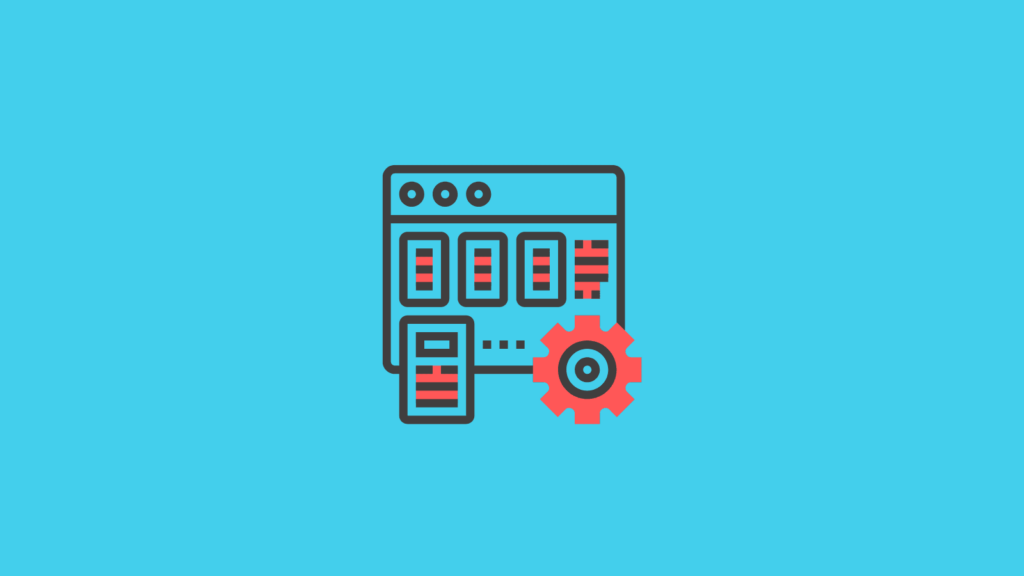Beyond File Storage: Harnessing the Potential of Digital Asset Management for Modern Businesses
The ability to maximize the potential of digital asset management (DAM) in today’s rapidly evolving digital environment has evolved into an essential component of successful enterprises.

Businesses are confronted with many digital assets, including images, videos, documents, and marketing materials. Effectively managing and organizing these assets is essential for sustaining a competitive advantage. Traditional file storage solutions are insufficient to satisfy the needs of modern enterprises.
In this article, we venture into what is digital asset management and examine how it offers potent tools and functionalities to facilitate asset organization, collaboration, and distribution that go beyond basic file storage. Learn how leveraging the potential of DAM can revolutionize how businesses manage their digital assets, boost productivity, and fuel development in the digital age.
In this article
The rise of digital asset management (DAM)

Businesses are adopting Digital Asset Management (DAM) solutions in response to digital assets’ increasing volume and complexity. DAM provides a comprehensive approach to asset management that goes beyond conventional file storage by offering advanced features such as metadata labeling, collaboration tools, automated distribution, and robust security.
With DAM, businesses can streamline asset organization, improve collaboration, optimize asset distribution, and ensure compliance, enabling them to maximize the value of their digital assets in the contemporary digital landscape.
Streamlining asset organization
Streamlining asset organization, a crucial component of Digital Asset Management (DAM), enables businesses to administer digital assets effectively, particularly with simple nonprofit asset management software.
DAM systems offer features like metadata labeling and advanced search capabilities, facilitating rapid categorization and location of assets. Additionally, DAM supports the creation of custom taxonomies tailored to specific organizational needs, and the establishment of consistent naming conventions and metadata standards.
This standardization enhances searchability, collaboration, and prevents duplication of assets, making it particularly useful in contexts where simplicity and efficiency are key, such as in nonprofit organizations.
Real-world implementation of DAM

Here are some of the key examples of the implementation of DAM:
Example 1: global advertising agency
Managing a global advertising agency’s extensive library of digital assets in multiple locations presented difficulties. By instituting a DAM system, they could centralize their assets’ storage and organization. The agency saved significant time and effort by utilizing metadata labeling and advanced search capabilities to locate and retrieve assets rapidly.
Within the DAM platform, teams could readily exchange, assess, and remark on assets, enhancing teamwork. The agency also utilized the automated distribution features of the DAM to seamlessly deliver assets to clients, thereby ensuring brand consistency and accelerating project timelines.
Example 2: E-commerce retailer
DAM was implemented by an e-commerce retailer with a vast assortment of product images, videos, and marketing assets to surmount their asset management challenges.
The retailer used DAM’s comprehensive metadata capabilities to classify assets by product type, color, and other pertinent attributes. This allowed for effective asset management and facilitated content discovery for marketing campaigns and website updates.
With DAM’s version control and collaboration capabilities, the retailer ensured that their teams and external stakeholders had access to the most current assets, eradicating the risk of using antiquated or incorrect materials.
Example 3: Media and entertainment company
A media and entertainment company with a vast library of audio, video, and multimedia assets encountered difficulties sharing and distributing content to its global partners and affiliates. They established a secure and scalable asset storage and distribution system by implementing DAM.
DAM’s automated transcoding and resizing capabilities enabled the organization to transform and adapt assets for various platforms and formats, ensuring optimal viewing experiences. In addition, the DAM’s rights management capabilities assisted the company in monitoring and enforcing copyright restrictions, thereby safeguarding its intellectual property.
Choosing the right DAM solution for your business

When choosing a Digital Asset Management (DAM) solution for your organization, several important factors must be considered.
First, evaluate the scalability and adaptability of the DAM system to ensure that it can accommodate your current and future asset storage requirements and adapt to changing business needs. Consider a solution that can be readily scaled up or down, supports a wide variety of file types, and offers features that can be customized to fit your operations.
Assess the security and access controls of the DAM solution to safeguard your valuable assets. Ensure it offers strong user authentication, role-based permissions, and encryption protocols to protect sensitive data.
Consider the integration capabilities of the DAM system with your existing tools and workflows to ensure seamless collaboration and interoperability across multiple platforms and applications. By meticulously evaluating these factors, you can select a DAM solution that meets your business requirements and enables you to manage and utilize your digital assets effectively.
Final words
The ability to maximize the potential of digital asset management (DAM) in today’s rapidly evolving digital environment has evolved into an essential component of successful enterprises.
Going beyond the capabilities of standard file storage, digital asset management (DAM) provides strong solutions that can streamline asset organization, improve collaboration, maximize distribution, and guarantee security and compliance.
FAQ
What is digital asset management (DAM), and why is it important for businesses?
Digital asset management (DAM) is the organization, storage, retrieval, and distribution of digital assets such as images, videos, documents, and creative files. It’s important for businesses because it streamlines workflows, ensures brand consistency, and improves collaboration and productivity.
How does digital asset management (DAM) differ from traditional file storage systems?
Digital asset management (DAM) differs from traditional file storage systems by offering advanced metadata tagging, version control, permissions management, and search functionality tailored specifically for managing and distributing digital assets effectively.
What are the key benefits of implementing a digital asset management (DAM) system for businesses?
The key benefits of implementing a digital asset management (DAM) system for businesses include improved asset organization and retrieval, increased efficiency in content creation and distribution, enhanced brand consistency, better collaboration among teams, and reduced risk of asset loss or misuse.
How does digital asset management (DAM) help businesses maintain brand consistency?
Digital asset management (DAM) helps businesses maintain brand consistency by providing a centralized repository for approved brand assets, enforcing usage rights and permissions, ensuring the latest versions of assets are used, and facilitating easy access to brand guidelines and templates.
What features should businesses look for when choosing a digital asset management (DAM) system?
Businesses should look for features such as customizable metadata fields, version control, access controls and permissions, intuitive search functionality, automated workflows, integration capabilities with other software tools, and scalability to accommodate future growth.
How does digital asset management (DAM) contribute to improved collaboration among remote or distributed teams?
Digital asset management (DAM) contributes to improved collaboration among remote or distributed teams by providing a central platform for storing, accessing, and sharing digital assets from anywhere with an internet connection, ensuring all team members have access to the same up-to-date assets.
What security measures should businesses implement to protect their digital assets within a DAM system?
Businesses should implement security measures such as role-based access controls, encryption of data in transit and at rest, multi-factor authentication, regular audits and monitoring of user activity, and integration with enterprise security systems to protect their digital assets within a DAM system.
How does digital asset management (DAM) streamline the process of content creation and distribution for businesses?
Digital asset management (DAM) streamlines the process of content creation and distribution for businesses by providing easy access to approved assets, facilitating collaboration among team members, automating approval workflows, and enabling seamless distribution across various channels and platforms.
What role does metadata play in digital asset management (DAM) systems, and why is it important?
Metadata plays a crucial role in digital asset management (DAM) systems by providing descriptive information about assets, such as keywords, tags, and usage rights, which helps users quickly find and identify relevant assets, ensures consistency in asset management, and improves searchability.
How can businesses measure the ROI (Return on Investment) of implementing a digital asset management (DAM) system?
Businesses can measure the ROI of implementing a digital asset management (DAM) system by tracking metrics such as time saved in asset retrieval and distribution, reduction in asset creation costs, improved brand consistency, increased productivity, and enhanced collaboration efficiency.
What are the key considerations for businesses when migrating to a new digital asset management (DAM) system?
Key considerations for businesses when migrating to a new digital asset management (DAM) system include evaluating current asset management workflows and needs, selecting a system that aligns with business goals and requirements, planning for data migration and user training, and ensuring seamless integration with existing tools and processes.
How can businesses ensure the long-term preservation and accessibility of their digital assets within a DAM system?
Businesses can ensure the long-term preservation and accessibility of their digital assets within a DAM system by regularly backing up data, adhering to industry best practices for data storage and archiving, maintaining metadata integrity, and periodically reviewing and updating asset management policies and procedures.
What role does version control play in digital asset management (DAM) systems, and why is it important for businesses?
Version control in digital asset management (DAM) systems ensures that users are accessing the latest version of assets, helps track changes and revisions over time, prevents accidental overwriting or loss of data, and maintains a clear audit trail of asset modifications, which is crucial for compliance and collaboration.
How can businesses leverage artificial intelligence (AI) and machine learning within digital asset management (DAM) systems?
Businesses can leverage artificial intelligence (AI) and machine learning within digital asset management (DAM) systems to automate metadata tagging and classification, facilitate content recognition and search, analyze asset performance and user engagement, and improve overall efficiency and decision-making.
What are some best practices for businesses to maximize the value and efficiency of their digital asset management (DAM) systems?
Some best practices for businesses to maximize the value and efficiency of their digital asset management (DAM) systems include establishing clear governance policies, providing comprehensive user training, regularly auditing and optimizing asset workflows, soliciting feedback from users, and staying informed about emerging trends and technologies in the field.
Boosting Visibility Where It Matters Most
Boosting Visibility Where It Matters Most Being [...]
Why Data-Driven Decision Making is Crucial for Organizational Growth?
Why Data-Driven Decision Making is Crucial for Organizational Growth? [...]
The SEO Strategy Shift You Can’t Afford to Ignore in 2025
The SEO Strategy Shift You Can't Afford to Ignore in 2025 [...]
Mastering Ghost Mannequin Photography: A Complete Guide
Mastering Ghost Mannequin Photography: A Complete Guide [...]
Staying Ahead in a World of Constant Online Scrutiny
Staying Ahead in a World of Constant Online Scrutiny [...]
How Eco-Conscious Vehicle Transport Services Are Gaining Ground
How Eco-Conscious Vehicle Transport Services Are Gaining Ground [...]
Create more and better content
Check out the following resources and Grow!